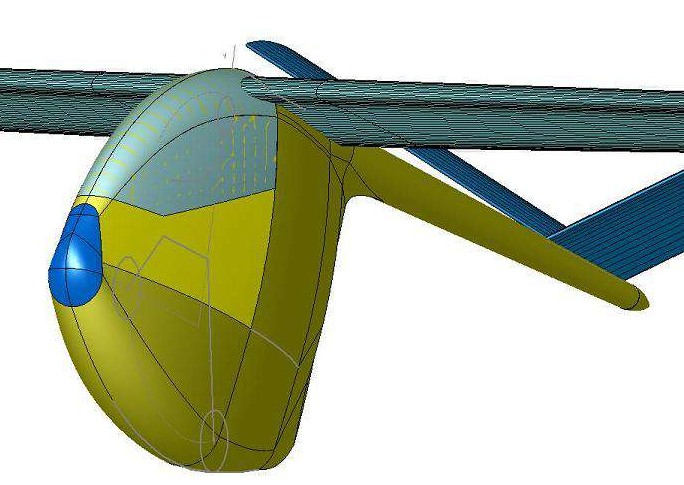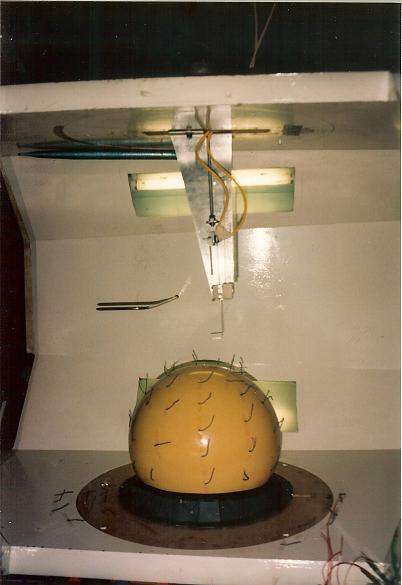Aeronautical Engineering
Aeronautical engineering services include detailed structural analysis, Finite Element Analysis and Computational Fluid Dynamics. In addition, 3D scaled models can be created from CAD models in for testing and computational validation.
The types of FEA and CFD analysis methods available are as follows:
- Structural FE Analysis - 3D Design, Explicit and Implicit, Linear and Non-Linear, including:
- Static analysis of Steel and Composite structures
- Buckling
- Nonlinear
- Linear Dynamic
- Fatigue analysis
- Pressure vessel Design
- Wind Tunnel Testing:
- Model Building of scaled components
- Testing and analysis of Wind Tunnel results
- CFD - External and Internal Flow simulation, including:
- Determination of drag coefficients
- Rotating Machinery
- Heat Transfer
- Ventilation
- Mixed Flow Simulation
- Fluid-Surface Interface (FSI)
- Rotating Machinery
- Design to prevailing codes of practice (JAR 23, CS-23) and EASA Part 21 applications for Minor mods
- Development of Innovative Structural Solutions


Case Studies for some recent applications of Aeronautical Engineering
Please see some recent applications relating to our work in Aeronautical Engineering - Click on thumbnails to see a larger image and slideshow.
Structural Modification of a DA-42 Composite aircraft
A Research and Development program for replacement of a composite Nose on a ‘Twin-Star’ DA42 aircraft in support of an STC was accomplished by Geodome in collaboration with Kingston University.
The new nose is intended to support a 45kg payload.
The project involved:
- Determination of composite structural layup and adhesive strength of primary load bearing components by FEA and testing of coupons.
- FEA of new nose section with modified nose for determination of required fastener strength
- Design and analysis of new bulkhead for support of the new nose
- Fabrication and bonding of the Bulkhead
- Test to 9g vertical load in accordance with JAR 23
Vintage Aircraft Modification
During an extensive renovation of a vintage twin engined aircraft (Aero 145) several minor modifications were required to its alloy airframe.
These included installation of inspection hatches, fitting of an upper torso restraint, improvements to canopy frame and installation of a new instrument panel.
Analysis methods included both traditional hand calculations and FEA.
Wind Tunnel Testing
Ducted Fan Research
An R&D program for experimental determination of shroud effect on a 5-bladed propeller was conducted in a low speed wind tunnel.
The main objective of the research was to determine the effect of the shroud on power coefficients of the assembly.
Test results revealed that gross thrust was improved by a margin of some 17% compared to an un-ducted fan due to reduction of tip losses and net thrust that the duct generates due to the inflow that the propeller generates.
Research and Development of a dome with a vertical Wind Turbine
The flow field at the apex of a dome was investigated for determination of the effect of curvature on thelocal free stream velocity.
The primary goal was to determine whether locally increased velocity could make the apex beneficial for palcement of a wind-turbine.
It was found that within a sector of approximately 300 around the apex of the dome, local free-stream velocity increased by a factor of 1.35. Since wind energy is proportional to the velocity to the power of three, the ensuing wind energy in that location was increased by a factor of 2.46.
CFD Simulations and Conceptual Designs
CFD has been used for predicting key aerodynamic charachteristics of various aircraft componetes.
These include High Lift Devices, Inlet flow performance and assisting the design of conceptual Human Powered Aircraft.
High Lift Devices
Computational Fluid Dynamics was used for determination of lift and drag coefficients of a sloted flap at low Reynold numbers.
Human Powered Aircraft
As part of a competition run by the Royal Aeronautical Society, design of a conceptual of a Human Powered aircraft was created.
The model was used for initial estimation of performance and aerodynamic characteristics, such as lif and drag coefficient.